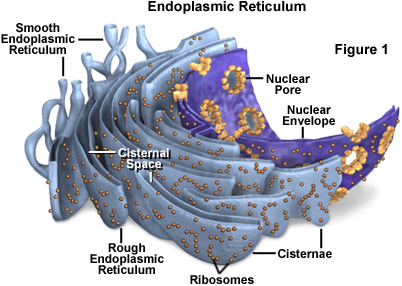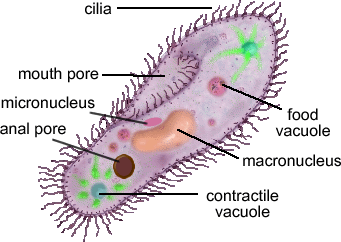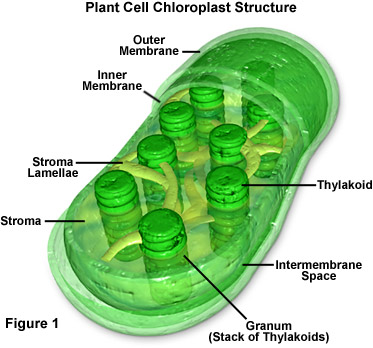Red blood cells
Function
- The red blood cell delivers oxygen to body tissues via blood flow through the circulation. They take up oxygen in the lungs or gills and release it while squeezing through the body’s capillaries.
- Structure:
- Biconcave discs, having a depressed center on both sides. (These depressed centers allow the cells to have more cell membrane surface we tend to use the phrase “higher surface area to volume ratio” which can be exposed to diffusing oxygen while transiting the lungs. This structure also allows them to be more flexible when negotiating tight passages.)
- 7.8 micrometers in diameter
- Does not have nucleus and most organelles such as mitochondria to accommodate maximum space for haemoglobin.(the compound that carries oxygen through the body.)
- check this website: http://www.wisc-online.com/objects/ViewObject.aspx?ID=ap14604
- Red blood cells are red only because they contain a (protein chemical ← wrong term. Haemoglobin is a protein, we don’t call it a protein chemical) called hemoglobin which is bright red in colour
- The main function of the red blood cell is to transport oxygen from the lungs, to the other tissues and cells of the body. The other function of the red blood cell is to partly carry carbon dioxide, which is a waste product of metabolic activities in the body.
Xylem Vessels (Xylem cells)
- Consist of dead hollow cells because the walls are lignified and the cell contents disintegrate.
- The lignin makes the cell wall impermeable so they are in effect waterproof. It also makes the vessels extremely strong and prevents them from collapsing. They have a wide lumen and are linked end to end to create a long, hollow tube since the end cell walls have one or many perforations in them.
- This allows the transport of large volumes of water. (The sidewalls have bordered pits (unlignified areas) to allow lateral movement of water ← this point will only be covered at higher levels).
- Xylem vessels are found in angiosperms.
Source:http://au.answers.yahoo.com/question/index?qid=20100710023937AAM9Akd
Intestinal Cells (sometimes known as intestinal epithelial cells)
Location: the small intestines
Structure and characteristics:
Structure and characteristics:
- Contain many membrane-bound vacuoles
- Aglycocalyx surface coat contains digestive enzymes. ← no need to know this for now, it is beyond your syllabus
- Microvilli on the apical surface increase surface area ← once again, the portion that is underlined should be re-written as “increase surface area to volume ratio” for the digestion and transport of molecules from the intestinal lumen
The points stated below refers to the functions of the intestine, which are facilitated by the intestinal epithelial cells
- Ion uptake
- Water uptake
- Sugar uptake
- The main function of intestinal cells is associated with secreting digestive juices into the lumen (the inner cavity of an intestine or blood vessel
Root Hair Cell
Structure + Function
1. Elongated structure that protrudes out to the soil
- This is to increase the surface area to volume ratio; thereby increasing the rate of uptake of water from the soil to the cell.
2. Large vacuole
- The root hair cell has a large central vacuole to maximize the amount of water capacity of the cell; thus, the cell is able to absorb and store more water.
3. Cell sap
- The cell sap of the root hair cell has a lower water potential than the water in the soil ← Good. We will learn what is water potential in the later lessons after ecology. Thus, the water from the soil moves into the cell via osmosis.
Read more: http://wiki.answers.com/Q/What_is_the_structure_of_root_hair_cells#ixzz21S1j6XeB
For the points below, it is more of how the various structures in the cell contributes to the function of a cell. May be said for plant cells in general, and is not specific to only the root hair cell.
4. Nucleus
-Contains contains chromatin material, consisting of the DNA if the cell which is important (inherited by the daughter cells)
5. Plasma membrane
-Controls the movement of substance into and out of the cell and is used for cell identification.
1. Elongated structure that protrudes out to the soil
- This is to increase the surface area to volume ratio; thereby increasing the rate of uptake of water from the soil to the cell.
2. Large vacuole
- The root hair cell has a large central vacuole to maximize the amount of water capacity of the cell; thus, the cell is able to absorb and store more water.
3. Cell sap
- The cell sap of the root hair cell has a lower water potential than the water in the soil ← Good. We will learn what is water potential in the later lessons after ecology. Thus, the water from the soil moves into the cell via osmosis.
Read more: http://wiki.answers.com/Q/What_is_the_structure_of_root_hair_cells#ixzz21S1j6XeB
For the points below, it is more of how the various structures in the cell contributes to the function of a cell. May be said for plant cells in general, and is not specific to only the root hair cell.
4. Nucleus
-Contains contains chromatin material, consisting of the DNA if the cell which is important (inherited by the daughter cells)
5. Plasma membrane
-Controls the movement of substance into and out of the cell and is used for cell identification.
6. Cell Wall
-The cell wall is a strong surface, surrounding the plasma membrane, which protects the cell and give it its shape. It also prevents expansion when too much water enter the cell.
-The cell wall is a strong surface, surrounding the plasma membrane, which protects the cell and give it its shape. It also prevents expansion when too much water enter the cell.
7. Cytosol
-The cytosol is made up of water, salts and organic molecules and many enzymes that speed up reactions. It is important as it suspends the cell organelles within it.
Read more: http://sst-health-science-class-107.blogspot.sg/2010/01/root-hair-cell.html
-The cytosol is made up of water, salts and organic molecules and many enzymes that speed up reactions. It is important as it suspends the cell organelles within it.
Read more: http://sst-health-science-class-107.blogspot.sg/2010/01/root-hair-cell.html









































